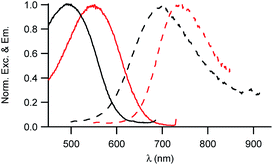

Infectious diseases are usually associated with low HDL cholesterol (HDL-C) concentrations and sometimes with low LDL cholesterol (LDL-C) concentrations, while triglyceride levels are typically maintained or even increased 6, 11. Researchers have not determined how these parameters will improve our understanding of the important role of cellular lipids in viral infections.

The standard clinical approach to assessing alterations in lipid metabolism is based on the measurement of cholesterol in several lipoprotein particles and triglyceride levels. Viral particles also interfere with these pathways, altering cell physiology and leading to apoptosis and cell death 5. In addition to structural and energy supply functions, intracellular lipids also act as intracellular signalling molecules or transcription factors. Both cellular glucose and lipid metabolism are extensively modified 6, and a recent metabolomic study of patients infected with SARS-CoV-2 has described a specific lipidomic fingerprint 10. In the host cell, the virus modifies cellular metabolism by altering energy production pathways for its own benefit. Recently, the SREBP-2 C-terminal fragment discovered in blood samples from patients with COVID-19 was identified as an indicator of the severity of the diagnosis and a therapeutic target for preventing the cytokine storm and organ damage 9. Based on studies of animal models, intracellular cholesterol may increase cellular SARS-CoV-2 infectivity 8. The newly synthesized viral particles exit the cells again by crossing the lipid-rich cell membrane. Once inside the cell, the virus replicates using the metabolic machinery of the invaded cell 7. The membrane lipid composition and particularly the lipid rafts influence this process 6. Viral internalization requires the attachment of the virus to the host cell membrane, activating an endocytosis mechanism 5. Membrane lipid components participate in the regulation of transmembrane molecular trafficking, including infectious materials such as viruses. Lipids are crucial in the infection process, as they are important structural components of cellular and subcellular organellar membranes. In this respect, a recent umbrella review of systematic reviews suggested that dyslipidaemia may play a role in the severity of SARS-CoV-2 infection 4. High blood pressure and dysglycaemia are associated with a worse prognosis however, although dyslipidaemia is one of the main cardiovascular risk factors, the association between baseline lipid levels and the prognosis has been less frequently studied. Age, sex, background therapies and comorbidities are the main clinical determinants of severity 1– 3. Given the limited treatment options, the identification of risk factors related to severe COVID-19 is of paramount importance to improve the prognosis. While the main pathophysiological mechanisms are being revealed, only some of the factors determining whether some patients have an asymptomatic course while others die have been identified.


The COVID-19 pandemic has rapidly spread worldwide, and it appears to be far from being controlled. The lipid profile should be considered as a sensitive marker of inflammation and should be measured in patients with COVID-19. The low HDL cholesterol and high triglyceride concentrations measured before or during hospitalization are strong predictors of a severe course of the disease. The presence of atherogenic dyslipidaemia during the infection was strongly and independently associated with a worse COVID-19 infection prognosis. HDL cholesterol and triglyceride concentrations were correlated with ferritin and D-dimer levels but not with CRP levels. The lipid profile measured during hospitalization also showed that a severe outcome was associated with lower HDL cholesterol levels and higher triglycerides. Patients with severe COVID-19 evolution had lower HDL cholesterol and higher triglyceride levels before the infection. The usefulness of serum total, LDL, non-HDL and HDL cholesterol to predict the COVID-19 prognosis (severe vs mild) was analysed. Observational cross-sectional study including 1411 hospitalized patients with COVID-19 and an available standard lipid profile prior (n: 1305) or during hospitalization (n: 297). We aim to ascertain the association of the plasma lipid profile with SARS-CoV-2 infection clinical evolution. The clinical significance of plasma lipid profile during COVID-19 has not been rigorously evaluated. Lipids are indispensable in the SARS-CoV-2 infection process.


 0 kommentar(er)
0 kommentar(er)
